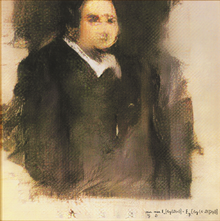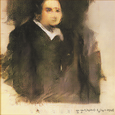Artificial intelligence art


Artificial intelligence Art refers to any artwork created with the assistance of artificial intelligence. It includes works created autonomously by AI systems and works that are a collaboration between a human and AI system.
Examples of AI Art[]
Prominent artists using AI in their creative practice include:
- Refik Anadol - Architecture and AI
- Sougwen Chung - Drawing and AI
- Harold Cohen - Drawing and AI
- Stephanie Dinkins - Social practice and AI
- Mario Klingemann - Animation and AI
- Mauro Martino - Sculpture and AI
- Lauren McCarthy - Performance and AI
- Wayne McGregor - Choreography and AI
- Eric Millikin - Video, VR and AI
- Trevor Paglen - Creativity and AI
- Anna Ridler - Photography, video and AI
- Karl Sims - Artificial life, animation and AI
- Pindar Van Arman - Creativity and AI
Tools and processes[]
There are many mechanisms for creating AI art, including procedural 'rule-based' generation of images using mathematical patterns, algorithms which simulate brush strokes and other painted effects, and artificial intelligence or deep learning algorithms such as generative adversarial networks and transformers.
One of the first significant AI art systems is AARON, developed by Harold Cohen beginning in the late 1960s.[1]
Since their design in 2014, Generative Adversarial Networks (GANs) are often used by AI artists. This is an AI system consisting of two elements. The first is the "Generator", the second is the "Discriminator". The discriminator is fed with images of existing art works, whilst the "Generator" attempts to create new images. The role of the "Discriminator" is to see if it can spot which works are computer generated, whilst the generator tries to create works which fool the discriminator. If the discriminator fails to spot a piece, that piece is considered successful.[2]
DeepDream, released by Google in 2015, is one of the more well-known AI art tools. DeepDream uses a convolutional neural network to find and enhance patterns in images via algorithmic pareidolia, thus creating a dream-like psychedelic appearance in the deliberately over-processed images.[3][4][5]
OpenAI released a series of images in January 2021 created using one of its algorithms "DALL-E". The program can use AI to generate a variety of drawings and pictures based on various text prompts.[6]
Sales[]
An auction sale of artificial intelligence art was held at Christie's Auction House in New York in 2018, where the AI artwork Edmond de Belamy sold for $432,500, which was almost 45 times higher than its estimate of $7,000-$10,000. The artwork was created by "Obvious", a Paris-based collective.[2][7][8][9]
References[]
- ^ Cohen, Harold (July 1, 2015). "Toward Diaper-Free Autonomy". Archived from the original on July 1, 2015. Retrieved September 27, 2021.
- ^ a b "Is artificial intelligence set to become art's next medium?". Christie's. December 12, 2018. Retrieved May 21, 2019.
- ^ Mordvintsev, Alexander; Olah, Christopher; Tyka, Mike (2015). "DeepDream - a code example for visualizing Neural Networks". Google Research. Archived from the original on July 8, 2015.
- ^ Mordvintsev, Alexander; Olah, Christopher; Tyka, Mike (2015). "Inceptionism: Going Deeper into Neural Networks". Google Research. Archived from the original on July 3, 2015.
- ^ Szegedy, Christian; Liu, Wei; Jia, Yangqing; Sermanet, Pierre; Reed, Scott; Anguelov, Dragomir; Erhan, Dumitru; Vanhoucke, Vincent; Rabinovich, Andrew (2014). "Going Deeper with Convolutions". Computing Research Repository. arXiv:1409.4842. Bibcode:2014arXiv1409.4842S.
- ^ "Here's DALL-E: An algorithm learned to draw anything you tell it". NBC News. January 27, 2021. Retrieved January 23, 2021.
- ^ "Portrait by AI program sells for $432,000". BBC News. October 25, 2018. Retrieved May 21, 2019.
- ^ Cohn, Gabe (October 25, 2018). "AI Art at Christie's Sells for $432,500". New York Times. Retrieved May 21, 2019.
- ^ Cohn, Gabe (October 22, 2018). "Up for Bid, AI Art Signed 'Algorithm'". New York Times. Retrieved May 21, 2019.
- Artificial intelligence
- Visual arts
- Digital art
